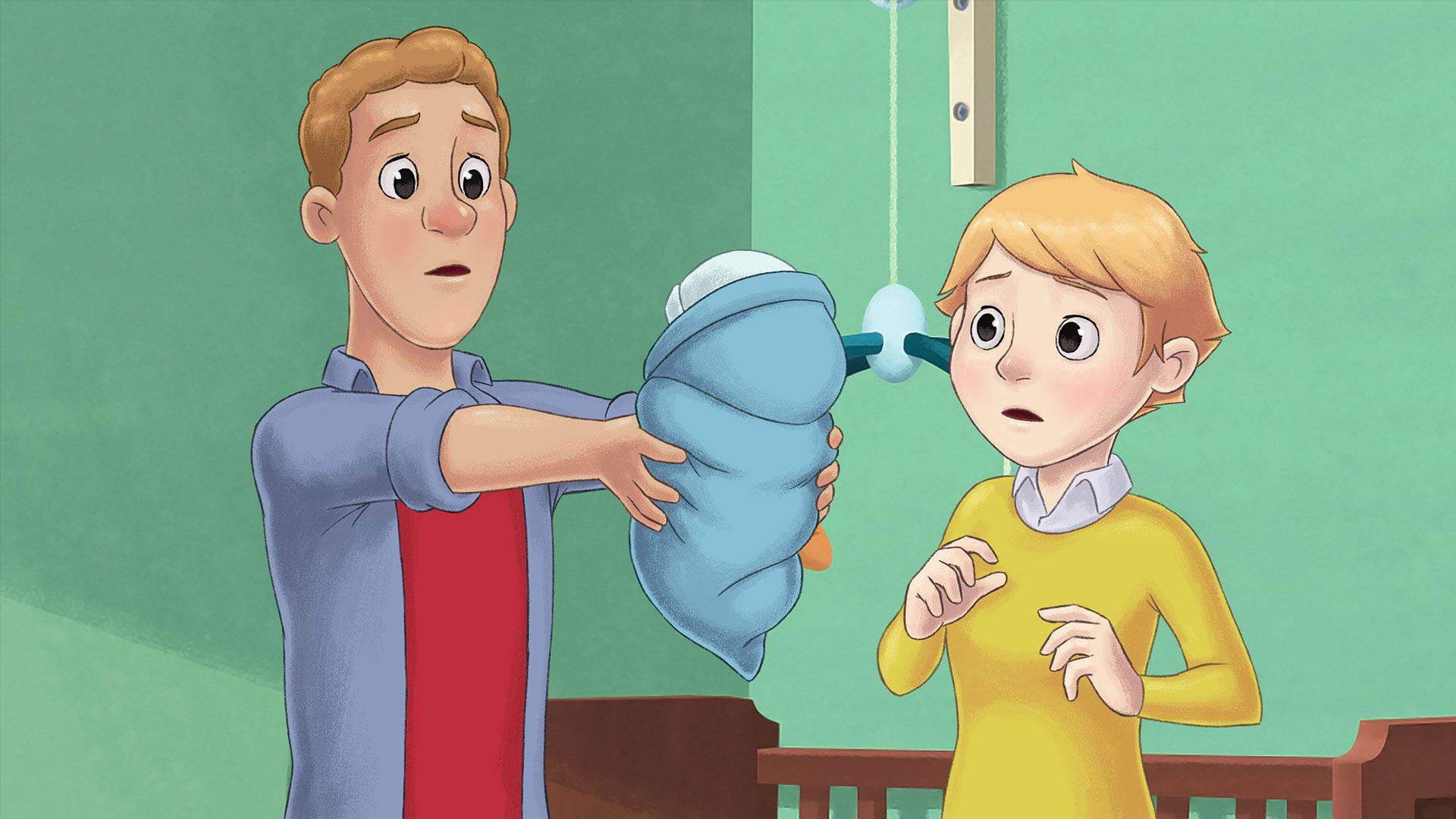Bringing home a new baby is tremendously exciting, but if you have pets, you may need to do a little preparation ahead of time to make sure that the whole family adjusts well to the new arrival. Some people can be fearful about the risk a pet may pose to a small child, but there is no need to panic and, generally, no need to give up your much-cherished pet. Indeed, having pets around can be a wond…

Safely holding a baby
Holding a baby safely
Picking up and holding your newborn baby can be a nerve-wracking experience to begin with. However, once you master the technique, it will become second nature. Babies love to be held and cuddled, so the sooner you feel comfortable handling them, the better.
The main point to remember is that your baby cannot support the weight of its own head for the first few months, or until its neck muscles become strong enough. This means you will spend most of your time interacting face-to-face with your baby, enjoying lots of bonding and kisses.
 Supporting baby's head when lifting.
Supporting baby's head when lifting. Supporting baby's head
Newborns
When your baby is born, it has very weak neck muscles and will be unable to lift or control its head movement for some time. Small babies' heads weigh more than any other part of their bodies - up to a quarter of their weight in most cases. This is why it is so important to support baby's head in the first few months. This means carefully cradling their head, neck and spine in the palm of your hand when lifting or moving them and also only placing them in positions where their head is supported.
When lifting your baby out of their pram or cot, use the following easy method:
- Mind your back when lifting baby - bend your knees first, then lean over;
- Always slide one hand underneath baby's head, fully supporting their head and neck;
- Slide your other hand down to cradle their bottom and lower spine;
- Gently lift baby up and bring them towards your chest, while ensuring their head is supported;
- Hold baby against your chest, keeping one hand behind their head and one under their bottom;
- Position baby so their head is just looking over your shoulder, but keep supporting their head;
- Alternatively, keep your hand behind their head, and gently position baby in the crook of your arm. The inner side of your elbow can provide good support for their head and holding baby close to your body provides comfort;
- Reverse this process to put baby down on the floor or into their crib, always supporting their head;
- If handing baby to someone else, ensure you keep your hand underneath their head and neck until the other person has control;
- Little babies are easily injured - avoid vigorous activity until they are more robust. Never, ever shake a baby - this can cause life-threatening brain damage in a matter of seconds;
- Holding baby across your arm while supporting their head is a good way to burp them, and;
- If holding baby at your shoulder, drape a cloth over your shoulder - babies often bring up milk.
 Supporting baby's head when burping.
Supporting baby's head when burping. The first two months
By the time your baby is four weeks old, they should be able to lift their head briefly while lying on their stomach and even turn it from side to side for a few seconds. They may be able to lift their head for a few seconds while on your shoulder - some babies are stronger than others and will have pretty good head control at six weeks.
When in a slightly reclining position in a car seat or lounger, your baby will usually be able to watch you and hold their head upright. However:
- It is too soon to use an upright stroller or backpack baby-carrier, as your baby's head will be wobbly and unstable. Wait until they can hold and support their own head without any help from you - using this type of equipment too soon can lead to a distressed baby and potentially cause injury, and;
- Continue to support your baby's head while lifting them in and out of their crib or pram and off their play mat.
Three months onwards
By the time your baby reaches three months of age, they will usually be able to hold their head steadily for longer periods of time. However:
- Still take care to support their head if they are still slightly wobbly and provide head support by positioning them in reclining seats, so they can sit back and watch the world go by, and;
- If you notice your baby trying to lift their head upwards while lying on their back, encourage this by gently pulling them upwards by their hands. Only do this for a few moments each time until they build up stronger neck muscles.
Once your baby is old enough to gain complete head control, you would not need to worry about supporting their neck and head all the time.
If your baby is struggling to support their own head by three months, mention this to your doctor.
Brain damage
The destruction of brain cells. This can have a number of causes including infection, trauma and disease.






